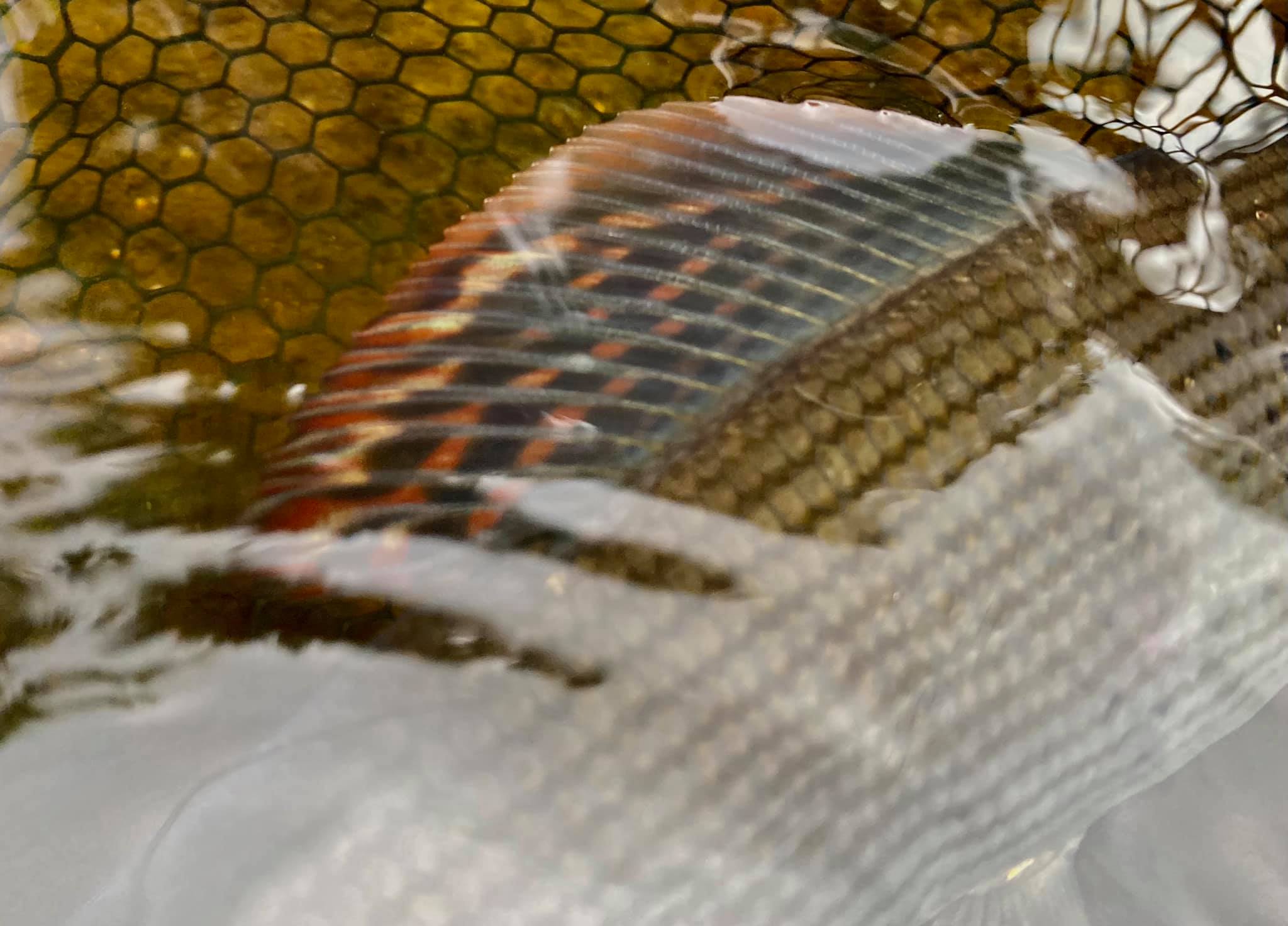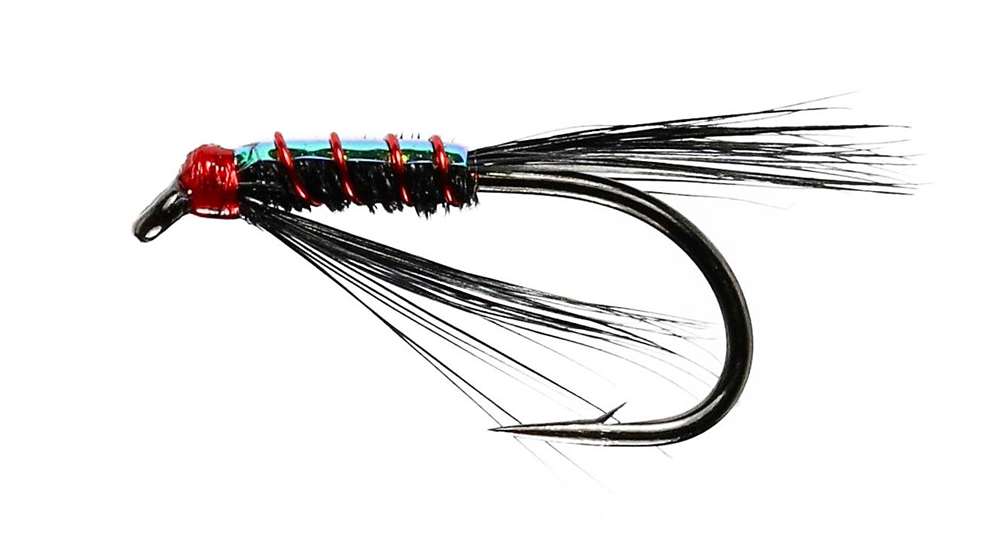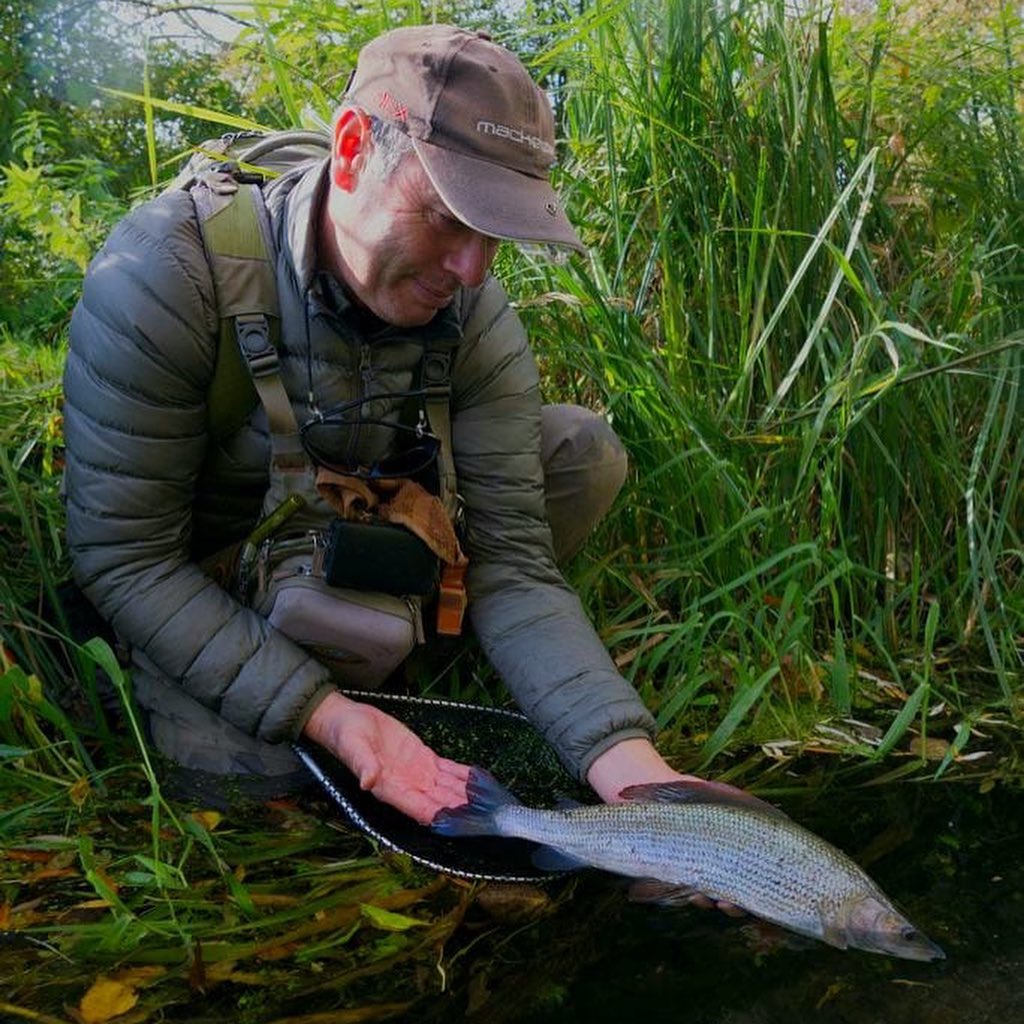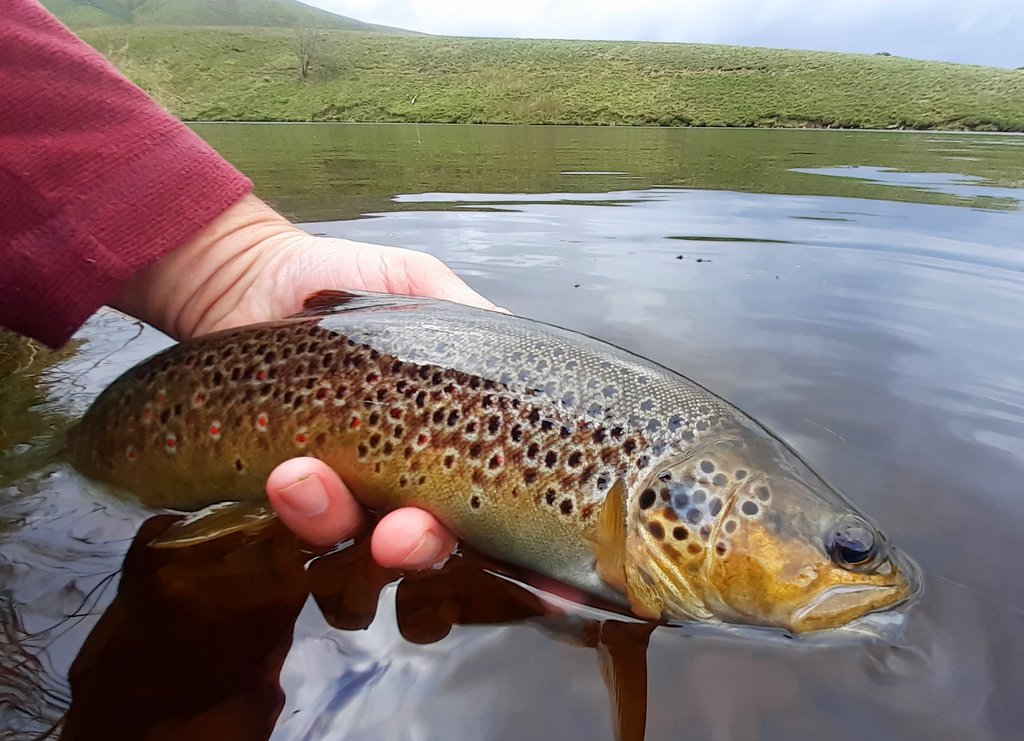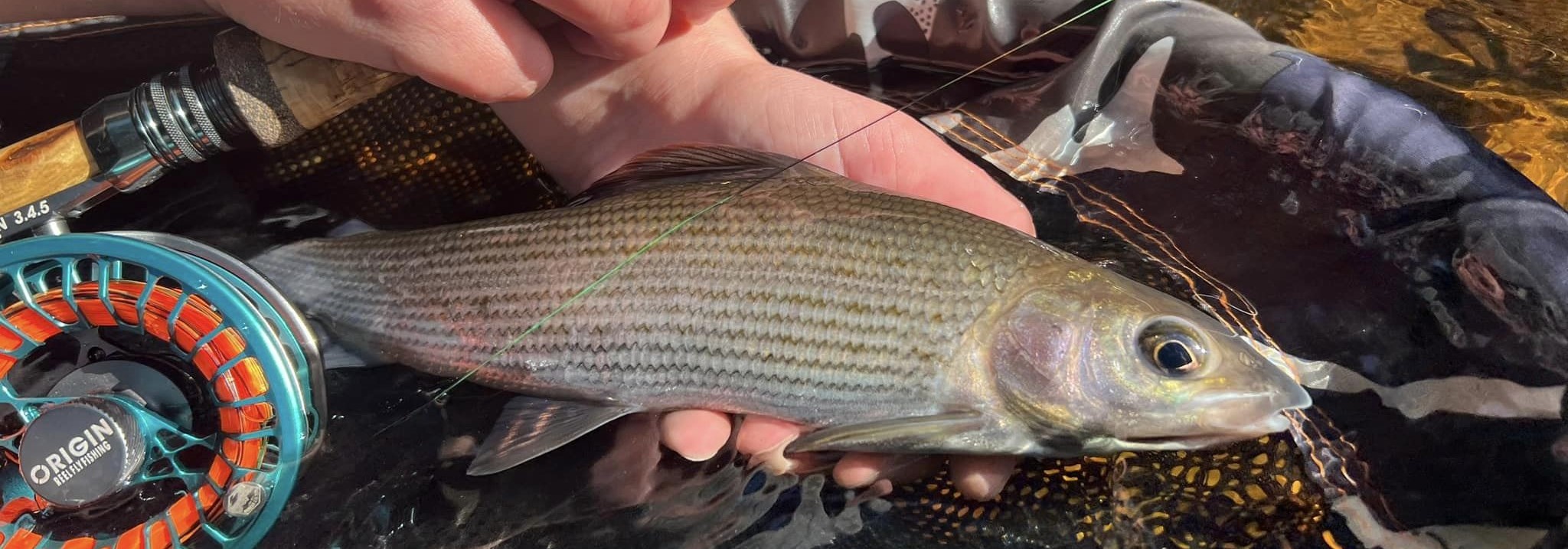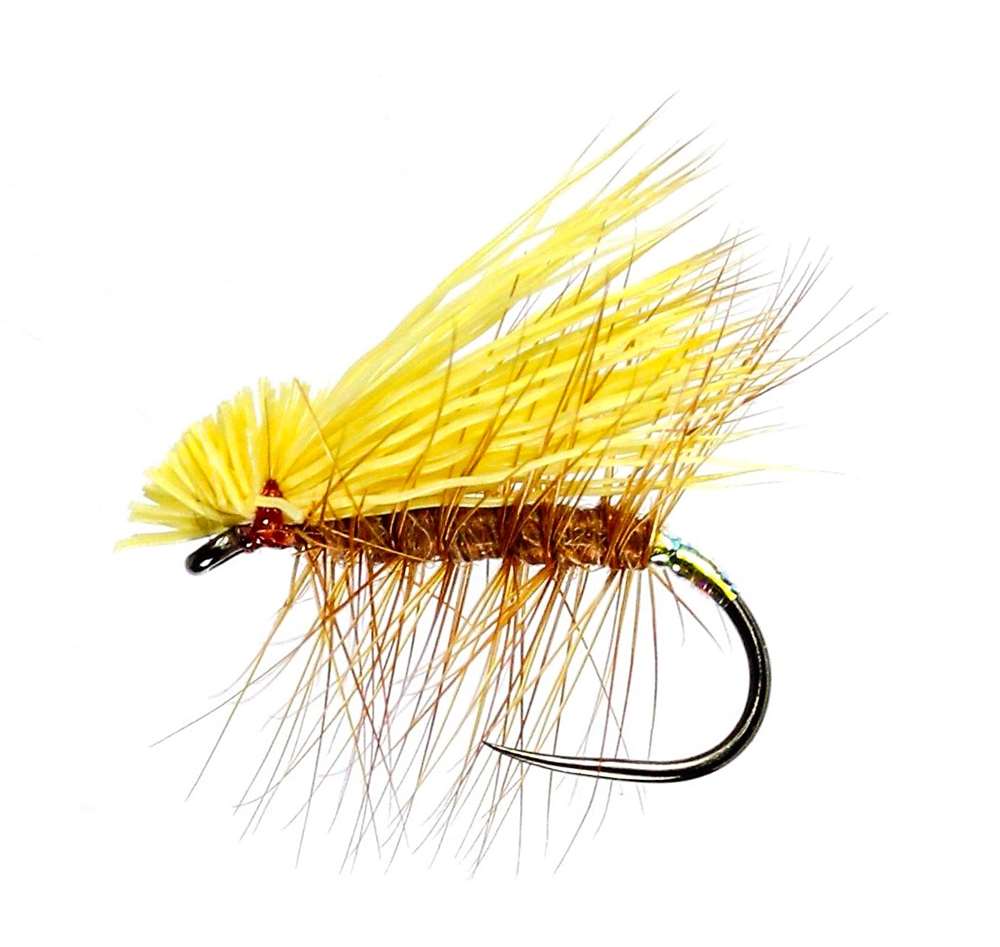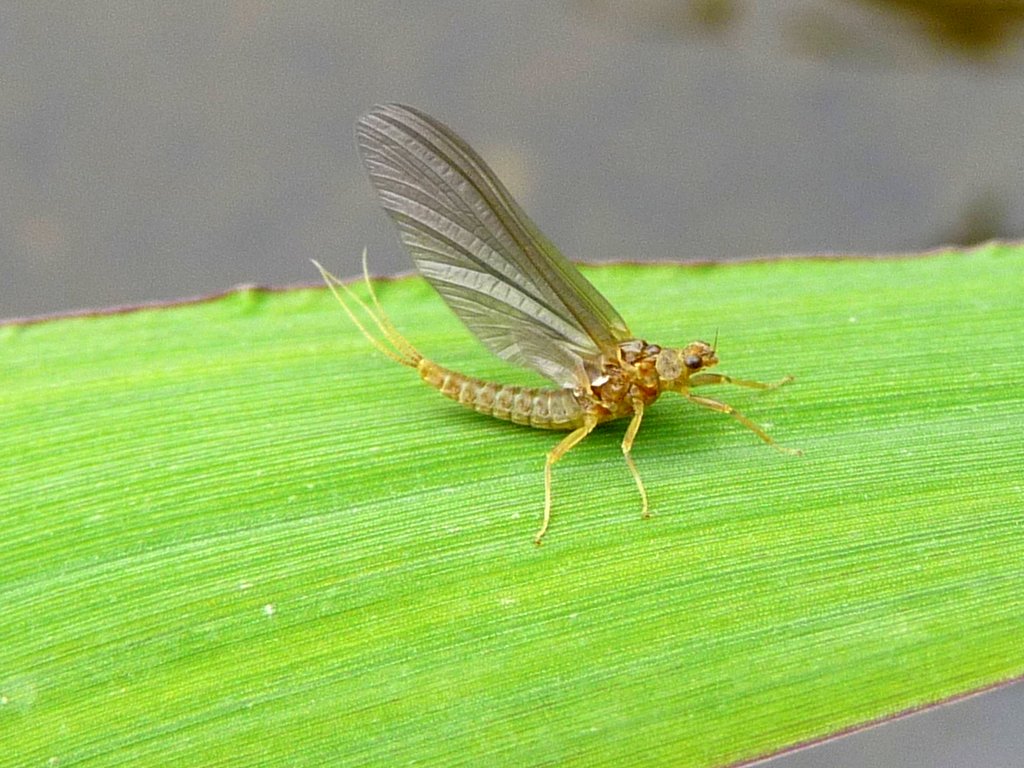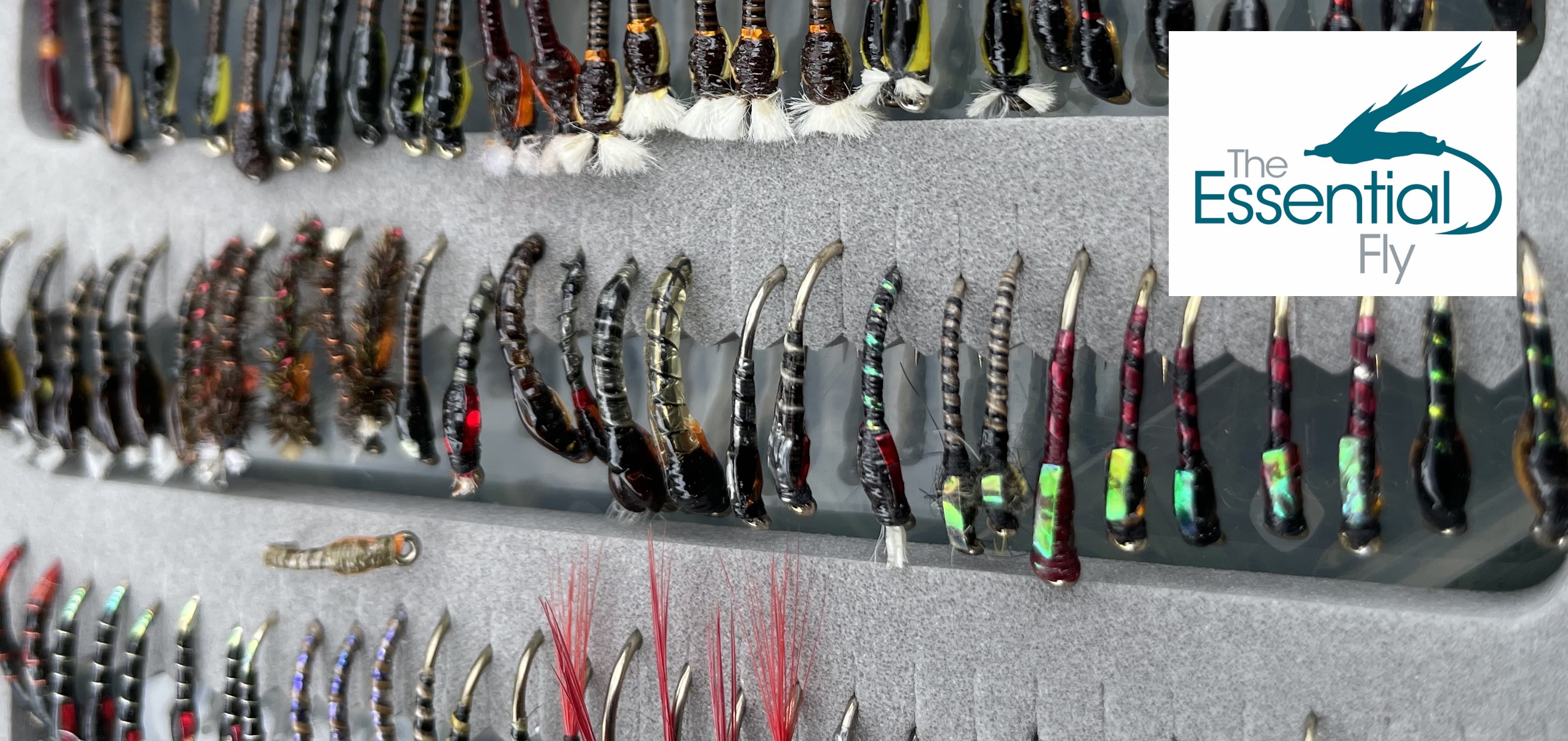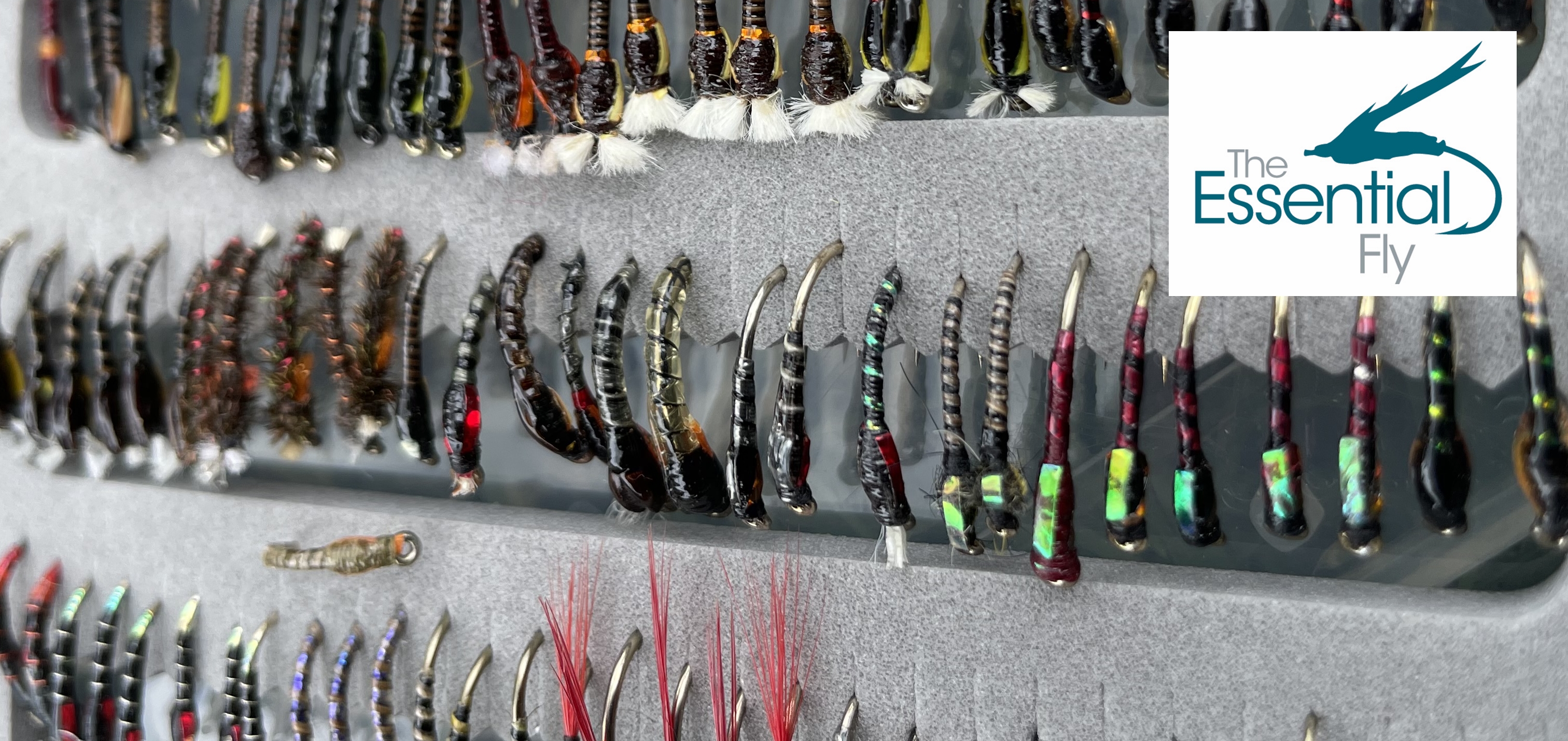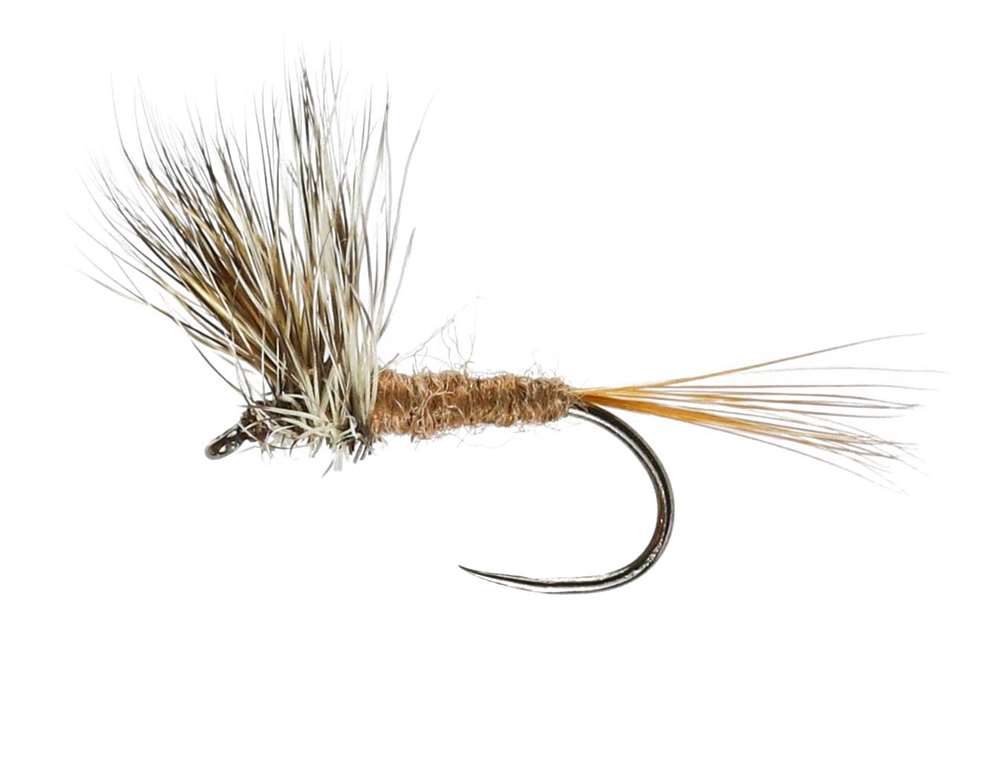Take a look at these winter fishing tips. Including top winter fly picks for river and stillwater fly fishing! These tips will keep you catching over the cold winter months!
Fly Fishing Flies
Advice on fly fishing flies. Whatever your preferred target trout, salmon, sea bass or tarpon we offer advice on fly fishing flies in this blog.
Diawl Bach in Welsh means ‘Little Devil’ and whilst the original Diawl Bach is devilish deadly these days we have many variants that are equally lethal. The original Diawl Bach simply consisted of a red game tail and beard hackle with the peacock herl body.
I’m often asked what flies are best for grayling. It’s always a tricky question to answer as much depends on where you fish the conditions and of course, what insects might be activity. That said, a quick glance at my fly box reveals more of certain patterns. Here’s what I consider my most important flies for grayling though they are not listed in an order of preference.
River fishing in September can be phenomenal and we usually get some nice warm and dry weather, which is music to the ears of a river angler after all the wet weather we’ve had this season! Fingers crossed we have a good end to the season!
August is a prime month for Heather Flies, which are a close relation of the Hawthorn Fly we see in April. We can instantly identify heather flies by the orange, trailing hind legs. They’re what we refer to as a ‘terrestrial’ which means they actually emerge on land. Winged adults now are easily blown onto water when a breeze picks up. Upland areas are considered a hotbed for heather flies though they do appear at lower elevations too.
When I was a youngster, wet fly fishing was all the rage. Then came the advent of mobile lures, typically incorporating marabou, or zonker strips. Our understanding of dry fly fishing developed too, when patterns like the Bristol hopper, or Leadbetter’s suspender buzzer took the stillwater scene storm. Obviously now, wet flies took a back seat.
Struggling When Fishing In Higher Water? These Rigs Can Help!
Here at The Essential Fly were always on the look out for what we can do to help you catch more fish! We're lucky to have inhouse fishing experts on hand to pick their brains for their knowledge and tips to help you well on your way to up your catch rate!
We picked the brains of Yorkshire angler and fly tyer Phillippa Hake to share with us her top three rig set ups for fishing the rivers when they're on the drop from recent rain!
A common fly that appears in our gardens and homes towards the backend, Daddy Long Legs (Craneflies) really need no introduction here, as they’re instantly recognizable by those six gangly legs. Gardeners know they larvae stage of daddies as leatherjacket, which are considered a pest as they eat the roots of various plants and vegetables. These larvae eventually pupate and what emerges from the soil is an adult cranefly, which makes them a terrestrial. Craneflies can be found far and wide, especially in undisturbed areas like bracken clad fells.
Originally labeled the “Bristol Hopper” what we now know as the ‘Hopper’ was developed in the Bristol area on reservoirs like Chew Valley some years ago now. The original I believe was the Amber Hopper though theses days this dressing has been used as a blue print for all the hoppers we see today.
The long hot days of July and August will see the bulk of sedges (caddisflies) hatch off come evening time. Whether it’s on a stillwater, or river those prepared to hang around in the evening often get the best of the fishing during summer, especially when hot, bright conditions persist. Better still, anglers who are stuck in the office all day, can rest assured that they’ll get a slice of the action too by heading out after dinner.
There’s a small olive coloured upwing species that despite its tiny size, causes quite a stir with trout on warm summer evenings. We’re talking about the Blue-winged olive (BWO). On rivers and streams across the UK this wee fly will have trout queuing up as the light fades.
There are lots of sedge/caddis patterns we can choose from when it comes to imitating sedges on the warmer evenings, however perhaps one of the most versatile dressings is the ‘Elk Hair Caddis’. Developed by an American called Al Troth this pattern can be dressed with, or without a palmered hackle. Obviously, a fly with the body palmered hackle has superior floating properties, which comes in handy when fishing more animated water, like a tumbling pool on a stream, or a big, rolling wave on a reservoir. A hackle-less version naturally rides lower in the surface film, making it a favourite where smooth, flat water occurs and when trout are targeting stillborn, or spent caddis that lie almost flush in the film.
At TEF we pride ourselves on keeping our finger on the pulse with relevant information. So, given the current warm and sunny spell firmly parked over the UK, here’s a handful of pointers that should help you get back on terms with trout.
We take a look at the mayfly compara dun, a fly you need in your box for the mayfly season!
There’s countless mayfly patterns out there, which decorate our fly boxes and granted most of them are killing patterns. However, it seems many of them fall into one of two camps, those for stillwaters and the others for use on rivers. There are some though that cross the divide and appeal to trout on both lakes and running water. One such dressing is the Compara Dun Mayfly. And whilst it trades on being a ‘adult dun’ pattern in essence, such is its low riding profile it will easily pass off as an emerger.
Perhaps the most celebrated period for us fly fishers’ is the month of May when we prepare ourselves for the arrival of mayflies. Appearing from the middle of May and through to early June, Mayflies are our largest and most graceful upwing species. The sight of the first mayfly of the season never fails to excite and is something both trout and angler revere.
Buzzers
Paul Procter follows on form his previous newsletter and talks all things emerging and adult buzzers Including his top fly patterns and fishing tips!
In our last Newsletter we discussed the pupal (pupa) and larval (bloodworm) stage of buzzers. Here, we’ll look at the emerging buzzer and the winged adult. Granted, the pupa stage of buzzers is extremely susceptible to trout, but the emerging pupa is perhaps even more vulnerable.
Paul Procter brings you all you need to know for early season buzzer fishing Including Paul's top buzzer picks, leader lengths and how to fish them!
There’s no question buzzers (chironomids) form the cornerstone of our fishing on stillwaters. This is especially true during spring when daytime hatches of the humble buzzer are more prevalent and of course, trout are keen to pack on weight.
April Stillwater Lure Fly Collection
Hand picked by our inhouse experts especially for you! Land more fish with these flies!
Included in the April Hatch Chart Fly Selection are the following
Fly In Focus - March Brown. Paul Procter talks all things March Browns, methods to fish them and fly choices to fool them fish! The fabled March Brown is considered by many as one of our most icon upwing flies. And whilst they don’t occur everywhere, they are one of the first upwings we experience during the opening weeks of a trout season. Naturally, as their common name implies they appear during the month of March. That said, some of the best hatches are often experienced throughout April.
The doors to the Trout season are mostly all open and we are all itching for some dry fly activity Whilst hatches can be sparse, if you find your self in a the midst of a hatch you could be in for a good session! It's worth mentioning that whilst we would all like some early season dry fly sport dont dismiss March Brown Nymphs in between hatches as these can bring some seriously good sport too!




